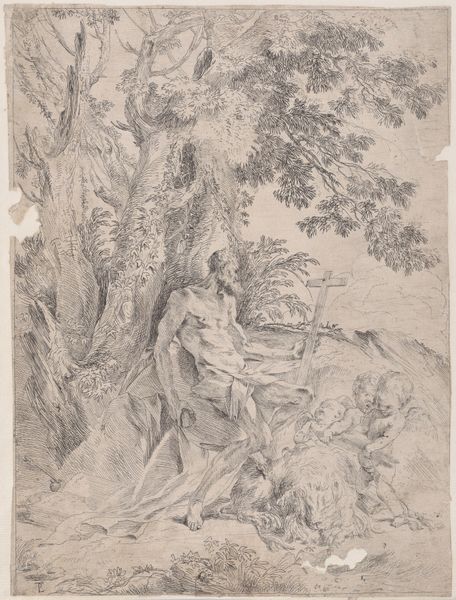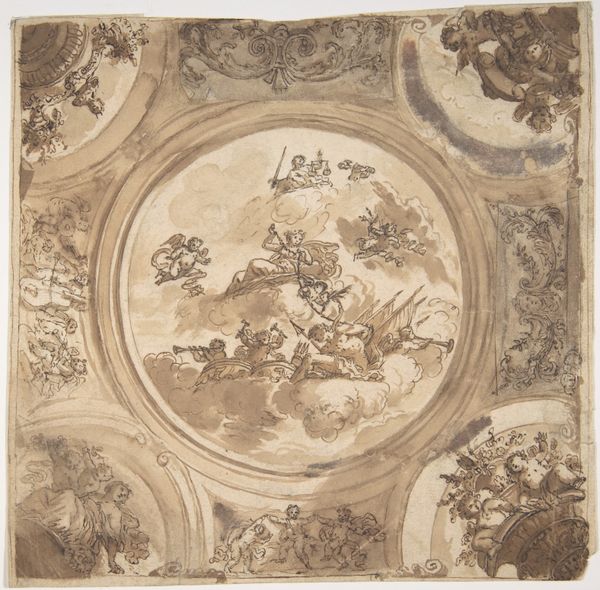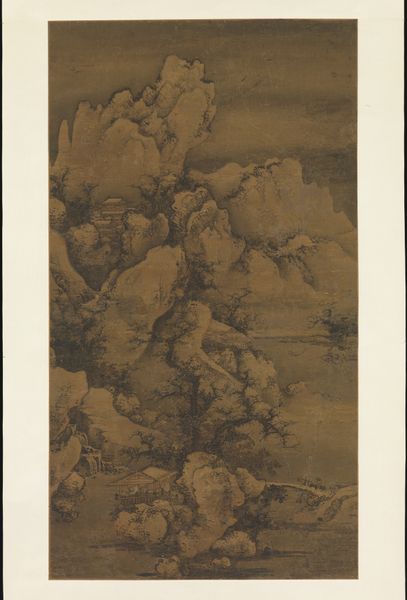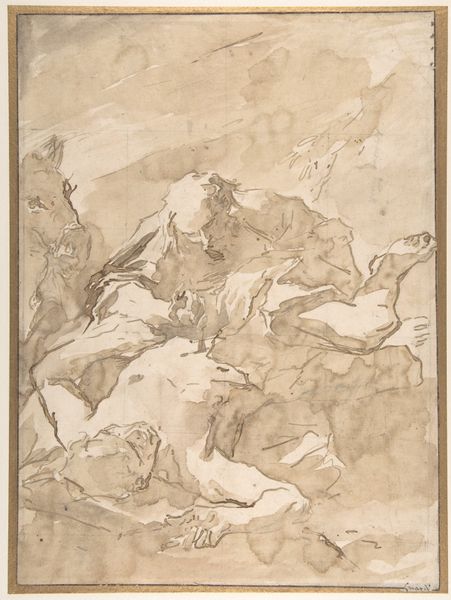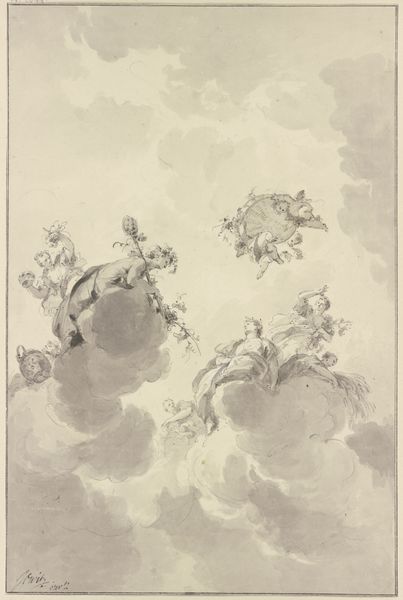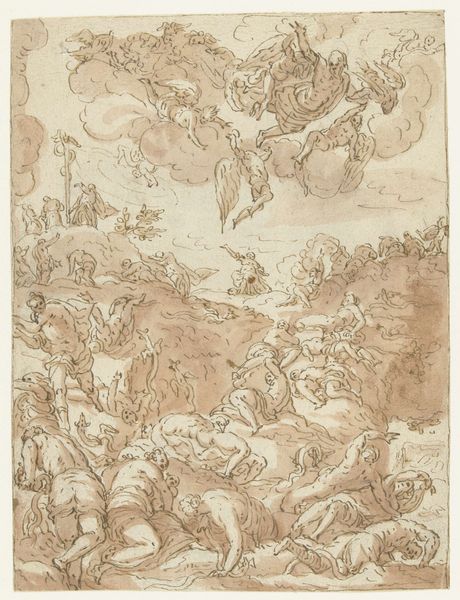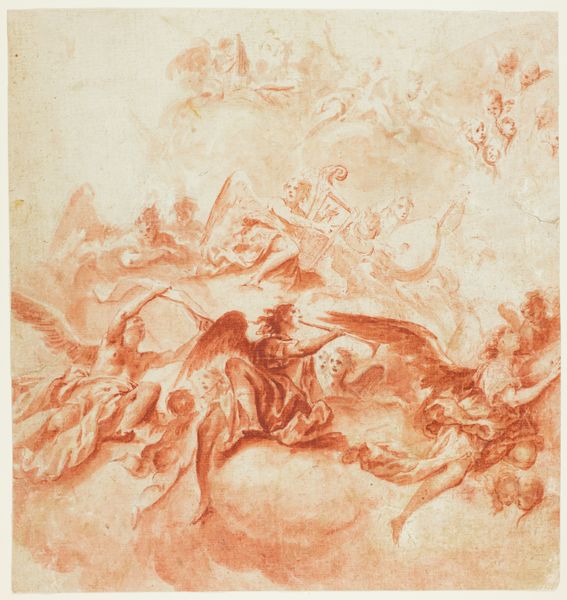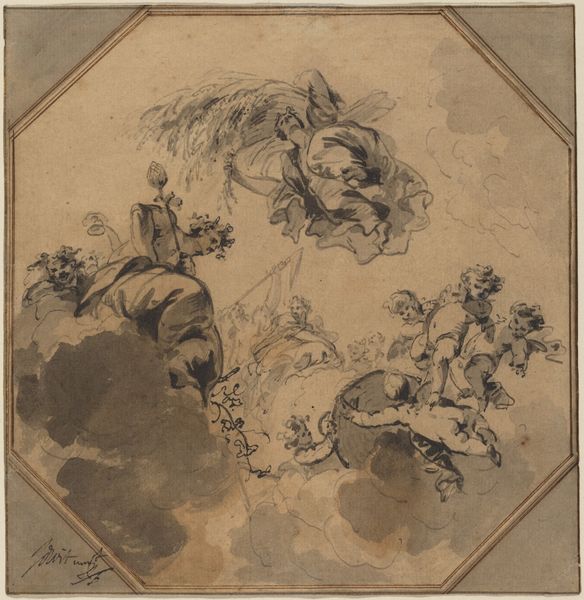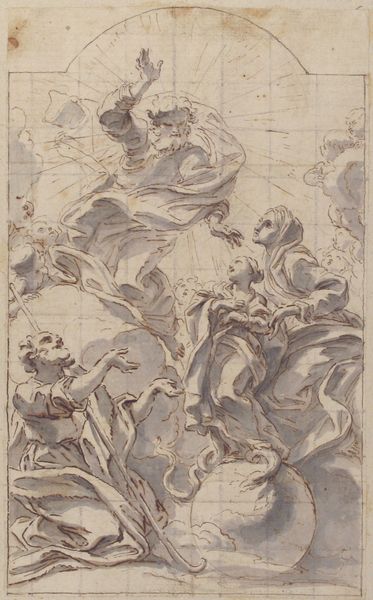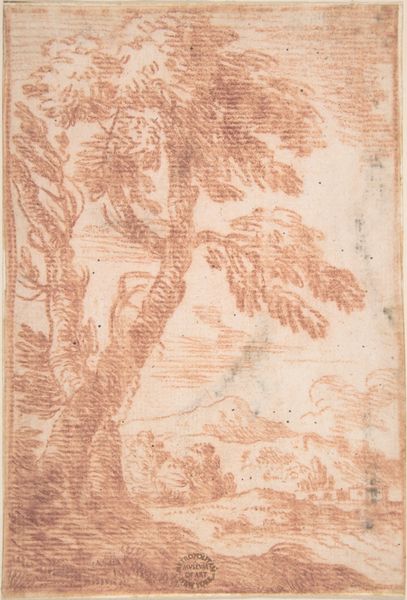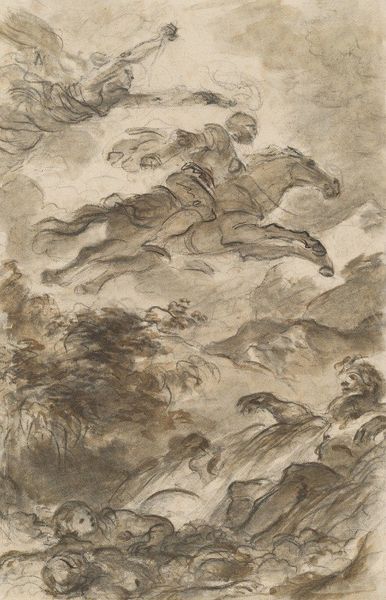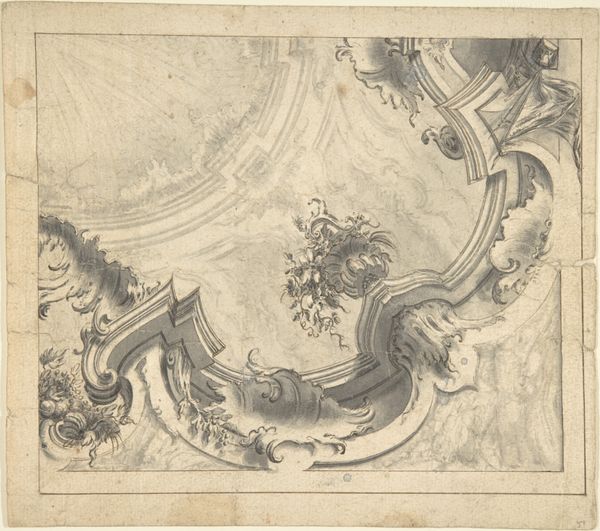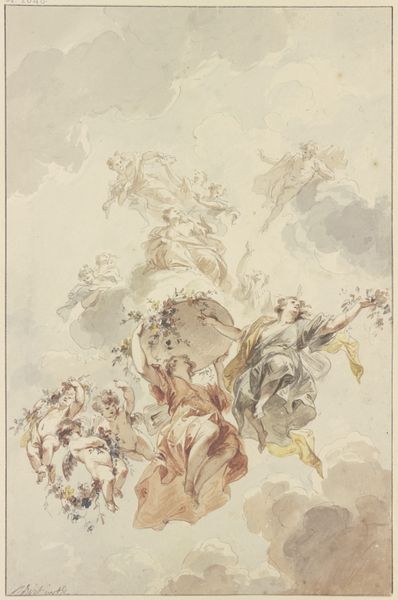
Ein Eber von sieben Hunden im Wald bei einem Felsen gestellt 1750
0:00
0:00
drawing, paper, ink, indian-ink, chalk
#
drawing
#
natural stone pattern
#
toned paper
#
baroque
#
pencil sketch
#
charcoal drawing
#
possibly oil pastel
#
paper
#
ink
#
carved into stone
#
underpainting
#
indian-ink
#
chalk
#
15_18th-century
#
watercolour illustration
#
pencil art
#
watercolor
Copyright: Public Domain
Curator: This dramatic forest scene, titled "Ein Eber von sieben Hunden im Wald bei einem Felsen gestellt," which roughly translates to "A Boar Confronted by Seven Dogs in a Forest Near a Rock," was created around 1750 by Johann Elias Ridinger. It’s a compelling work done with ink, chalk and indian ink on paper. Editor: It’s intense! The textures feel almost palpable; you can practically hear the dogs barking and the boar’s enraged snorts. The way he renders the undergrowth, and the rock... it all feels so raw and immediate. Curator: Ridinger was, of course, famous for his depictions of animals, particularly scenes of the hunt. Considering the era's aristocratic obsession with hunting, one could examine how images such as these might glorify domination over nature and affirm social hierarchies through symbolic representation. The artistic processes themselves reflect this pursuit – literally capturing the likeness of animals on the page. Editor: Absolutely. Hunting as a visual motif goes way back, right? There's a primal, even mythical quality here. Boars often symbolized untamed nature, strength, and even evil. Think of the Calydonian Boar in Greek mythology, or even medieval tapestries depicting boar hunts, these animals stood for formidable foes to be overcome, or embodiments of chaos to be purged. And, here, the pack of dogs adds another layer – they stand for loyalty, perhaps, but also the relentless pursuit of social order… even the light coming in from above has an almost allegorical function in creating two spaces or teams: boar and pack of dogs! Curator: Yes, and in terms of the materiality and labour, Ridinger's reproductive prints made his imagery widely accessible, catering to this market. The technical skill displayed is definitely part of the commodity, it's evidence of mastery that makes the object valuable. Editor: Though the rendering feels quite naturalistic, the symbolic weight gives it a life of its own beyond just documentary. I read it as more than just a boar hunt. Curator: Perhaps a visualization of power dynamics between social groups as they are acted out and naturalized through violent scenes of conquest. Editor: Or as representations of timeless conflicts, struggles embedded deep within our collective psyche. I find his choices around medium quite interesting, how charcoal and chalk blend together so softly... the lack of high contrast almost allows for more tension between the species. Curator: It seems our perspectives converge nicely around the complexity of the image! Editor: It does indeed; I find the piece incredibly compelling viewed from both a material and iconographic standpoint.
Comments
No comments
Be the first to comment and join the conversation on the ultimate creative platform.
